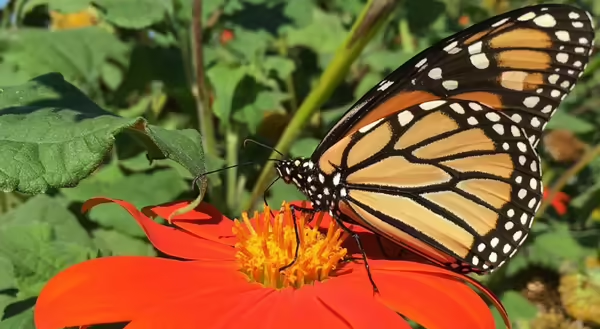
Each year, the month of May is Monarch Month in Illinois to honor our official State Insect. Despite our efforts to honor our butterfly friend, the annual count of Monarchs recently saw a 53% decline in a one-year period, and the Monarch will be considered for inclusion on the Endangered Species list in December 2020.
These numbers make state collaborations like the Illinois Monarch Project that much more important. What can you do?
- Plant milkweed. The goal for the Illinois Monarch Project is to plant 150 million new plants by 2038. Every stem will help.
- Participate in the I-Pollinate program. I-Pollinate is a citizen science research initiative, through the University of Illinois, designed to collect state-wide pollinator data. I-Pollinate enlists citizen scientists to participate in three research projects and collect data on monarch egg and caterpillar abundance, pollinator visitation to ornamental flowers, and track state bee demographics.
- Change your mowing strategies. Only mow when necessary and allowing some land to grow wild (pursuant to local ordinances). Do not mow lawns short and mow less often. Farmers should avoid mowing ditches May 1 – June 30th and August 15 – September 30. The mid-summer mow creates new, tender leaves that monarchs prefer.
- Plant a pollinator garden. If you were to plant a 10 square foot garden of milkweed that would equate to 150 stems and would greatly help Illinois’s goal in doing their part to conserve monarchs. Plant Ecologists whose research focuses on Monarchs at the Illinois Natural History Survey, say that swamp milkweed (Asclepias incarnata) has been the most preferred milkweed species of Monarchs. Establish groupings of plants in full sun and eliminate pesticide use.
- Include sources of nectar throughout the entire growing season.
- Spring: Chives, Culver’s Root, Viburnum, High bush blueberry, and Amelanchier
- Summer: Salvia, Coneflower, Prairie Blazing Star and Buttonbush
- Fall: Monarda, Aster, Goldenrod, Sedum and Lead plant
- Plant blooming annuals like Salvia, Zinnias, Cosmos, Lantana, Mexican Sunflower and Lavender
- Plant a ground cover of White Clover, Creeping Thyme or Buckwheat
Kids in the Garden: Teach kids about the lifecycle of monarchs to develop their appreciation for nature. Dried pasta is a great representation of the stages when arranged on paper and labeled: orzo (egg), fusilli (larvae), shell (chrysalis), farfalle (adult). University of Illinois Extension youth horticulture educator, Brittnay Haag says “Encourage kids to share what they have learned about monarchs with others. The more someone knows about something they can do to make a difference, the higher the chance they will support and protect the monarch butterfly!”